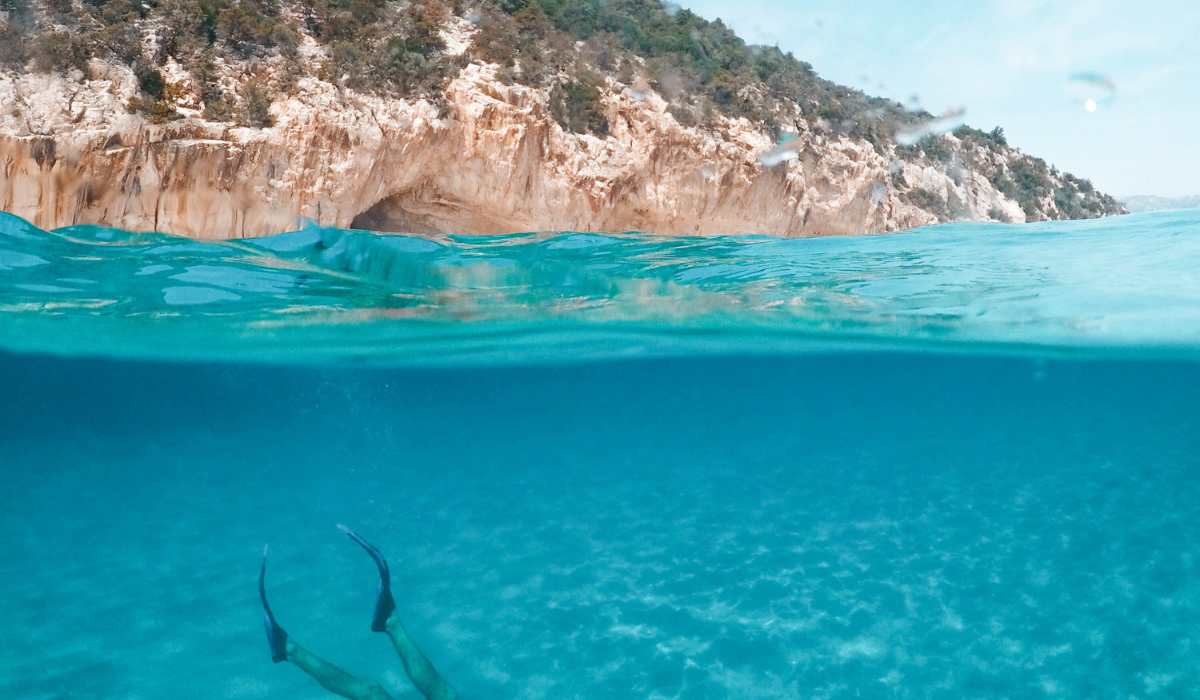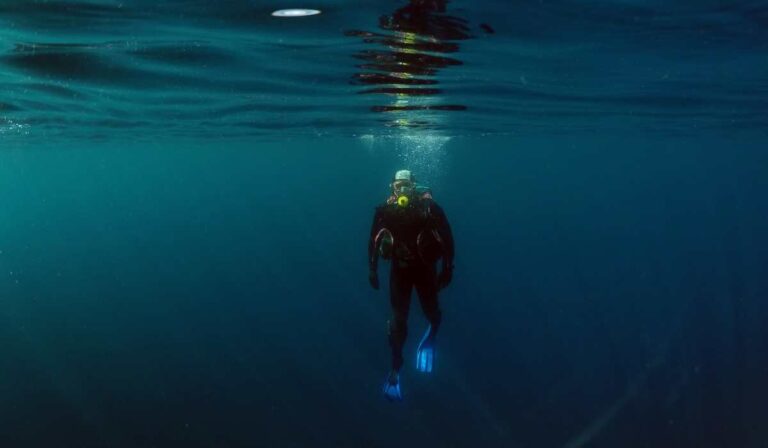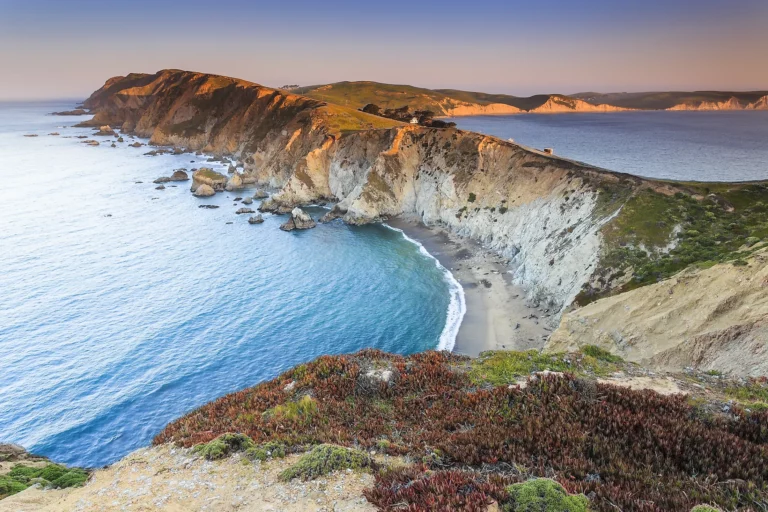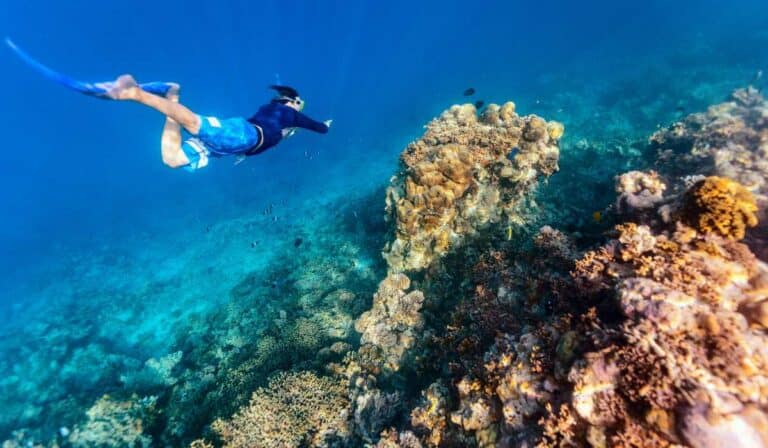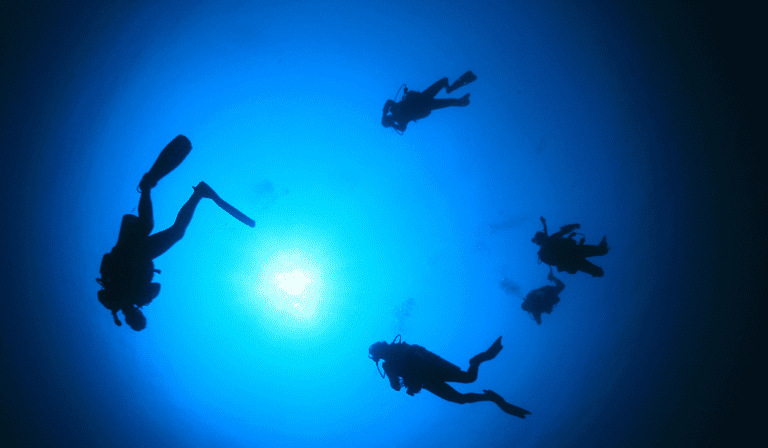Best Spots for Scuba Diving in California
Scuba Diving in California offers a unique and diverse underwater experience along the beautiful coastline of the Golden State. With an array of dive sites suitable for beginners to advanced divers, California provides a plethora of opportunities to explore kelp forests, rocky reefs, and fascinating marine life.
In this blog post, we’ll discuss the top scuba diving spots in California, exploring both Northern and Southern regions while providing essential gear information, tips on when to dive for optimal conditions and safety advice. We’ll also discuss essential gear needed for your underwater adventures and share tips on when to go scuba diving in order to enjoy optimal conditions.
Furthermore, safety is paramount while exploring California’s underwater world; hence we’ll provide crucial safety tips every diver should follow. Lastly, we will highlight some amazing marine life you can expect to encounter during your dives and how best to plan your trip for an unforgettable scuba diving experience in California’s Best Spots For Scuba Diving.
Table of Contents
1. Overview of Scuba Diving in California
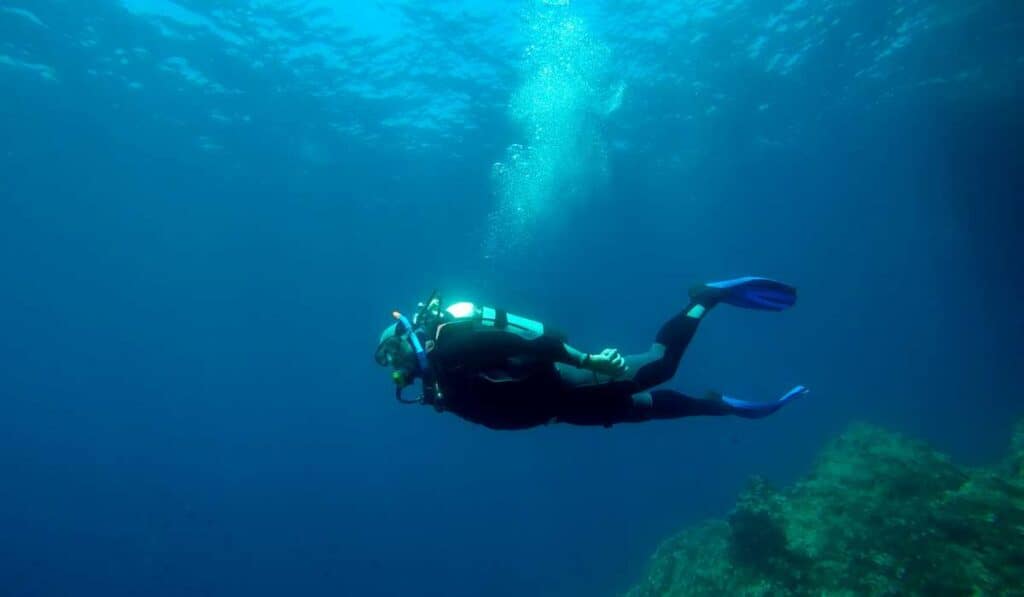
California offers a broad selection of scuba diving experiences, from the chill waters and lush kelp forests in its northern regions to the balmy, more tropical climates along its southern shoreline. Before you dive into the depths of California’s waters, it is important to be aware of local regulations and laws for scuba diving.
Laws and Regulations for Scuba Diving in California
In order to ensure safety and protect marine life, there are several laws and regulations that divers must adhere to while exploring Californian waters:
- All divers must display a dive flag when they are submerged or at surface level.
- Divers should maintain a distance of at least 100 feet from any fishing gear or equipment.
- The collection of certain marine species is regulated by size limits, bag limits, seasons or closures; always check current rules before collecting anything during your dive.
- Spearfishing is prohibited in areas such as Marine Protected Areas (MPAs) and State Marine Reserves (SMRs), so divers must take care to observe all regulations when collecting marine species.
What To Expect When Scuba Diving In The Golden State
The diversity of California’s coastline means that each region offers unique opportunities for exploration beneath the waves. Northern California boasts colder water temperatures ranging between 45-60°F (7-16°C), which support lush kelp forests teeming with marine life like sea lions, seals, rockfish, and even great white sharks. Southern California, with its warmer waters ranging from 60-72°F (16-22°C), boasts a variety of marine life including vibrant coral reefs, shipwrecks, and an array of tropical fish species.
No matter where you choose to dive in California, be prepared for an unforgettable experience as you explore the state’s underwater wonders. In the following sections, we’ll discuss some of the best spots for scuba diving along the coast and provide tips on how to make your dives safe and enjoyable.
Exploring the deep sea and its captivating wildlife is a thrilling experience available to those who scuba dive in California. With that said, let’s take a look at some of the best spots for scuba diving in California.
Key Takeaway:
Californian diving offers a broad range of opportunities, ranging from the chillier waters and kelp beds in the north to more temperate conditions along its southern coast. Divers must adhere to laws and regulations while exploring Californian waters, such as displaying a dive flag when submerged or at surface level, maintaining distance from fishing gear or equipment, and checking current rules before collecting anything during your dive.
Click here to read about Discover the Best Scuba Diving Fins
Best Spots for Scuba Diving in California
Scuba diving in California provides a wide range of sites, from the cold waters up north to the milder southern coast, each boasting its own unique marine life and underwater scenery. Each location boasts unique marine life and underwater landscapes that will leave you breathless. Here are some top spots for scuba diving along the Golden State’s coastline:
- Catalina Island: Located just off the coast of Los Angeles, Catalina Island is home to crystal-clear waters teeming with vibrant sea life such as garibaldi fish, kelp forests, and playful sea lions. Popular dive sites include Casino Point Dive Park and Ship Rock.
- Anacapa Island: Part of the Channel Islands National Park, Anacapa Island offers an abundance of marine life including seals, dolphins, whales, and colorful fish species like sheepshead and calico bass. Check out popular dive sites like Cathedral Cove or Underwater Arch at Anacapa Island.
- La Jolla Cove: This picturesque cove near San Diego provides excellent visibility and calm conditions perfect for beginner divers while also offering exciting encounters with leopard sharks during their mating season between June-September. Learn more about La Jolla Cove’s diving opportunities here.
- Monterey Bay Marine Sanctuary: Known for its nutrient-rich waters attracting a wide variety of marine creatures such as otters, seals, and sea lions. Popular dive sites in this area include Point Lobos State Reserve and the famous Monterey Bay Marine Sanctuary.
- Fort Ross Cove: Located along the rugged Northern California coast, Fort Ross Cove offers divers a chance to explore kelp forests and underwater rock formations while encountering marine life such as abalone, cabezon fish, and even octopuses. Find more information on diving at Fort Ross State Historic Park here.
For those looking to explore the depths of California’s coastline, there are many remarkable diving spots to choose from. No matter your skill level or interests, there is sure to be an unforgettable underwater adventure waiting for you. Whether you’re looking for shark diving, night diving, or cage diving, California has it all.
The state’s marine protected areas and dive sites offer amazing diving conditions for both advanced and experienced divers. So, pack your gear and head to the California coast for a great place to scuba dive.
California provides a plethora of fantastic diving locations, ideal for those seeking aquatic adventures. With the right gear and safety precautions in mind, you can have an amazing experience while exploring California’s underwater wonders. To ensure your safety and comfort while scuba diving in California, it is important to have the right gear.
Key Takeaway:
California’s shoreline presents a selection of scuba diving spots, varying from the cold waters in the north to the balmy south coast. Popular dive sites include Catalina Island, Anacapa Island, La Jolla Cove, Monterey Bay Marine Sanctuary, and Fort Ross Cove which offer unique marine life and underwater landscapes that will leave you breathless. No matter your skill level or interests there is sure to be an unforgettable underwater adventure waiting for you in California.
2. Gear Needed for Scuba Diving in California
Scuba diving in California requires the right gear to ensure a safe and enjoyable experience. To remain comfortable and safe, a wetsuit or drysuit is essential for diving in California’s waters of varying temperatures. Here are some of the key items you’ll need when scuba diving in California:
- Wetsuit or Drysuit: A wetsuit is crucial for maintaining warmth while submerged in colder waters. For most dives, a 7mm full wetsuit should suffice; however, if you plan on diving deeper or exploring colder regions like Northern California, consider investing in a drysuit instead.
- Fins: Fins help propel you through the water with ease and efficiency. Choose fins that fit comfortably on your feet and provide adequate power without causing strain on your legs.
- Masks & Snorkels: Your mask should fit snugly around your face without any leaks while providing clear visibility underwater. Don’t forget to bring along a snorkel as well – this simple piece of equipment allows you to breathe at the surface without wasting air from your tank.
- Buoyancy Control Device (BCD) & Regulator Set: These two pieces of gear work together to control buoyancy underwater and deliver air from your tank into your mouthpiece efficiently. Make sure to test your BCD and regulator set before your dive to ensure they are functioning properly.
Having the right gear is essential for a safe and enjoyable scuba diving experience in California. To maximize your enjoyment, it’s beneficial to research the optimal times for scuba diving in California.
Click here to read about Best Watches for Scuba Diving: Time to Dive In
3. Best Times to Go Scuba Diving in California
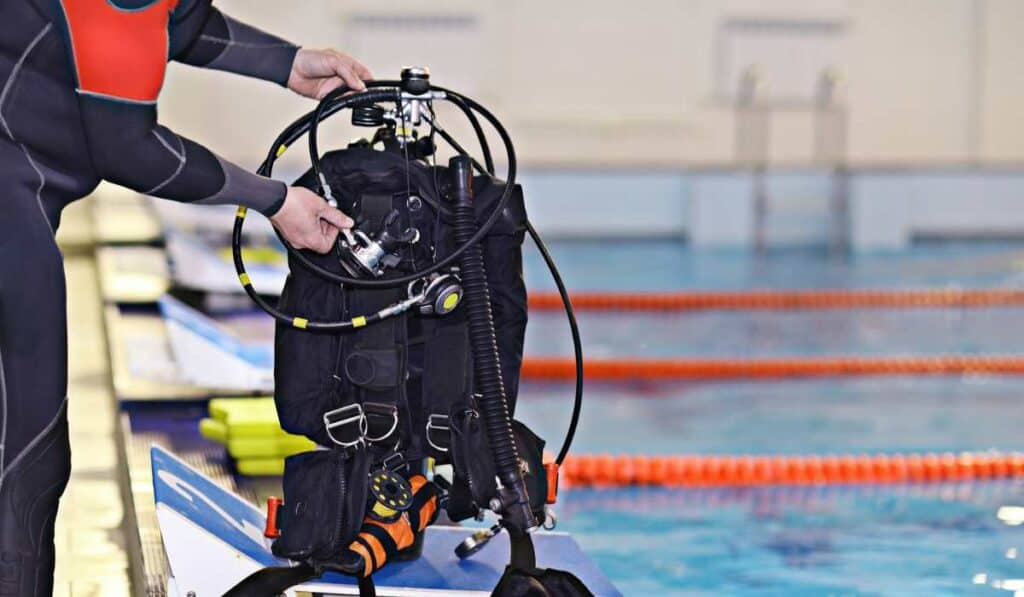
The ideal moment for scuba diving in California varies based on several elements such as water temp, visibility, and sea life activity. While it’s possible to dive year-round, certain times of the year offer more favorable conditions for an enjoyable underwater experience.
Spring (March-May)
In spring, water temperatures begin to rise slightly after a chilly winter season. Visibility also starts improving during this period due to reduced plankton blooms compared to the summer months. This makes spring a great time for exploring California’s kelp forests, which are teeming with marine life such as sea lions and various fish species.
Summer (June – August)
During the summer, coastal waters of California typically reach temperatures between 55°F and 70°F, making it an ideal time for scuba diving despite reduced visibility in certain areas due to plankton blooms. However, increased plankton blooms may reduce visibility at some dive sites. Despite lower visibility in certain spots, summer is still considered a prime time for scuba diving due to its balmy climate and tranquil seas.
Fall (September – November)
Fall offers excellent diving opportunities with clearer waters resulting from decreased plankton activity following the end of summer blooms. Water temperatures remain relatively warm during this period but start dropping towards late fall when winter approaches. Additionally, fall is known for being shark season in Southern California – making it an exciting time if you’re interested in encountering these magnificent creatures while scuba diving.
Tips:
- If you prefer warmer waters: Summer is your best bet; however, be prepared for potentially lower visibility at some dive sites.
- If you prioritize clear waters and marine life encounters: Spring and fall are ideal times for scuba diving in California.
- For shark enthusiasts: Fall is the prime time to spot sharks, especially off the coast of Southern California. Check out popular spots like Guadalupe Island or San Diego’s La Jolla Cove.
In conclusion, while it’s possible to go scuba diving year-round in California, certain seasons offer more favorable conditions depending on your preferences. Whether you’re after warm water temperatures or exceptional underwater visibility, there’s a perfect time for everyone to explore the depths of California’s coastal waters.
Exploring the mesmerizing depths of California’s aquatic world can be done through scuba diving, a thrilling activity that should not be missed. For a secure experience when taking part in this exciting activity, it’s essential to comprehend and adhere to the appropriate safety protocols for scuba diving that will be discussed in our upcoming section.
Key Takeaway:
California offers great scuba diving opportunities year-round, but the best time to go depends on your preferences. Spring and fall are ideal for clear waters and marine life encounters, while summer is warmer but may have lower visibility due to plankton blooms. In the autumn months, Southern California is a great spot for spotting sharks, making it an exciting time for shark lovers.
Click here to read about Best Spots for Scuba Diving in the Caribbean
4. Safety Tips for Scuba Diving in California
Scuba diving is an exciting and rewarding activity, but it’s essential to prioritize safety when exploring the underwater world off the coast of California. By following these important safety tips, you can ensure a fun and enjoyable experience while minimizing potential risks.
Avoid Strong Currents
The waters along the California coastline can be unpredictable at times, with strong currents posing a significant risk to divers. It’s crucial to research local conditions before embarking on your dive and avoid areas known for powerful currents or rough seas. The National Data Buoy Center provides real-time information about ocean conditions that can help you plan your dive accordingly.
Maintain Proper Communication With Your Dive Buddy
Diving with a buddy is not only more enjoyable but also significantly safer than going solo. Make sure both you and your dive partner are familiar with common hand signals used by scuba divers so that you can communicate effectively underwater without relying on verbal communication.
- OK: Forming a circle using the thumb and index finger indicates everything is fine.
- Problem: A flat hand moving side-to-side means an issue requiring attention.
- Air Supply Check: Tapping one fist against another requests air supply status from your buddy.
- Air Supply Low: An extended arm making an L-shape signifies low air supply, signaling it’s time to ascend safely together.
Beware of Marine Life Hazards
Divers should be mindful of potential risks associated with the vibrant marine life in California, and keep a respectful distance from all wildlife. Some marine creatures, such as sea lions and seals, may be curious about divers and approach them closely. It is advisable to maintain a respectful distance from marine wildlife, even if they appear friendly.
Additionally, some species can pose risks if not handled properly or accidentally disturbed. For example, the California coast is home to several species of venomous fish like scorpionfish and stingrays that can cause painful injuries if stepped on or touched. To avoid unwanted interactions with these creatures, always practice good buoyancy control and keep your hands off the ocean floor.
Monitor Your Air Supply
Regularly checking your air supply throughout your dive is crucial for ensuring you have enough time to safely return to the surface before running out of air. Establish a plan with your dive buddy regarding when you’ll check in on each other’s air levels so that both parties remain informed about their remaining resources.
Dive Within Your Limits
Last but not least: know your limits. It’s essential only to attempt dives within your skill level and experience range – don’t push yourself too far just because an exciting opportunity presents itself during a trip. Always remember that safety comes first; there will always be another chance for more advanced dives once you’ve gained additional training or certifications.
When scuba diving in California, adhering to safety regulations is essential for a safe and enjoyable experience. Moving on, let’s explore some of the amazing marine life found while scuba diving in California.
Key Takeaway:
When scuba diving in California, it’s important to prioritize safety by avoiding strong currents and communicating effectively with your dive buddy using hand signals. Divers should also be aware of potential marine life hazards, such as venomous fish and curious sea lions or seals. Monitoring air supply and only attempting dives within one’s skill level are crucial for a fun and safe experience.
Click here to read about Scuba diving in Australia: Top Spots, Tips & Marine Life
5. Marine Life Found While Scuba Diving In California
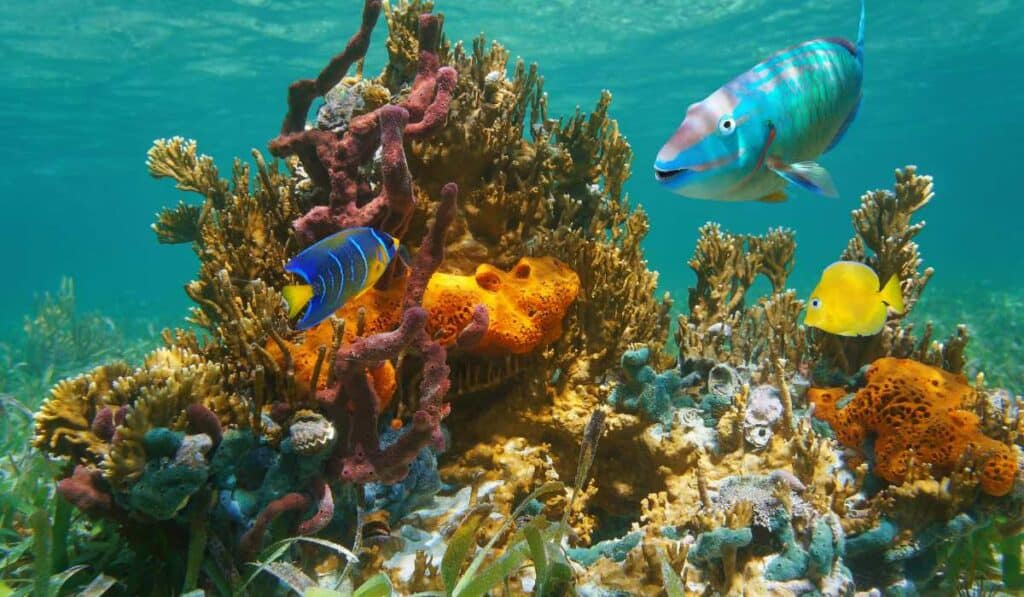
Scuba divers will be amazed by the array of diverse and lively aquatic life that inhabits California’s submerged realm. From colorful fish species to fascinating invertebrates, there’s no shortage of incredible creatures waiting to be discovered beneath the surface. Here are some examples of marine life you might encounter while scuba diving off the coast of California:
Fish Species
- Garibaldi: As the official state marine fish, these bright orange beauties can be found in abundance throughout Californian waters. Learn more about this protected species at the California Department of Parks and Recreation website.
- Kelp Bass: Also known as Calico bass, these greenish-brown fish are often seen swimming among kelp forests.
- Giant Sea Bass: Although rare due to overfishing, encountering one of these massive black sea bass is an unforgettable experience for divers.
- Moray Eels: These snake-like creatures with sharp teeth may look intimidating but are generally shy around humans unless provoked.
Invertebrates
- Nudibranchs: These colorful sea slugs come in various shapes and sizes; they’re a favorite subject for underwater photographers. Check out this guide on how to identify different types by visiting the Nudibranch Identification Guide website.
- Anemones & Sea Stars: Vividly colored and diverse, these invertebrates can be found clinging to rocks or hiding among kelp forests.
- Octopuses: Known for their intelligence and ability to change color, encountering an octopus is always a thrilling experience for divers. Learn more about the fascinating world of octopuses at the Monterey Bay Aquarium website.
Other Marine Life
- Dolphins & Seals: You may have the chance to spot playful dolphins or curious seals swimming nearby during your dive.
- Sharks: While not as common, there’s always a possibility of spotting various shark species such as leopard sharks, horn sharks, or even great white sharks off California’s coast. Be sure to follow safety guidelines when diving in areas known for shark activity.
- Kelp Forests: The iconic underwater landscapes of California are home to numerous marine species; exploring these lush environments is a must-do while scuba diving in the state. Visit this informative page on kelp forest ecosystems by checking out the National Ocean Service website.
Beyond just being visually stunning, encounters with marine life also provide valuable opportunities for learning about our ocean ecosystem and its inhabitants. Remember that it’s essential always to respect local wildlife by maintaining distance from animals and never touching them unless absolutely necessary due to safety concerns.
Californian waters boast a broad spectrum of aquatic life, from dazzling corals and anemones to massive fishes and cetaceans, that can be encountered while scuba diving. Having acquainted yourself with the aquatic wildlife of California, it is time to begin arranging your scuba diving excursion.
Key Takeaway:
California’s waters offer a diverse range of marine life for scuba divers to explore, including the state fish Garibaldi, kelp bass swimming among kelp forests, and even rare giant sea bass. In addition to colorful invertebrates like nudibranchs and anemones, divers may encounter dolphins or seals while exploring California’s iconic kelp forests. However, it is important always to respect local wildlife by maintaining distance from animals and never touching them unless necessary for safety concerns.
6. Planning Your Trip For Scuba Diving In California
Organizing a scuba diving holiday to California can be an exhilarating prospect, yet it’s essential to dedicate time and effort to readying yourself for a successful dive. From booking accommodations to researching dive sites ahead of time, here are some tips on how you can plan your perfect underwater adventure.
A. Choose the Right Dive Site
The first step in planning your scuba diving trip is selecting the ideal dive site. Consider factors such as water conditions, marine life sightings, and accessibility when making your decision. Researching various locations online or consulting with experienced divers will help ensure that you choose a spot that suits both your skill level and interests.
B. Book Accommodations Near Your Dive Site
For the best scuba diving experience in California, it is recommended to book lodging close to your selected dive site. This will not only save you travel time but also allow for easy access if weather conditions change or if you decide to explore multiple dives during one day.
- Tip: Look for hotels or vacation rentals near popular dive spots like Monterey Bay or Catalina Island.
- Note: Some areas may have limited lodging options; therefore, booking early is recommended.
C. Arrange Transportation To And From The Dive Site
If traveling from outside of California, consider renting a car at the airport upon arrival so that transportation between accommodation and dive sites is convenient throughout your stay. Alternatively, scenic drives along the California coast offer a unique way to explore multiple dive sites during your trip.
D. Research Dive Shops And Charters
Research local dive shops and charters in advance, as they can provide valuable information on equipment rentals, guided dives, and even transportation to remote dive locations. Be sure to read reviews from other divers for insights into their experiences with these services.
E. Obtain Necessary Permits And Licenses
If you plan on diving within protected marine areas or participating in activities such as spearfishing or lobster hunting, be aware that certain permits and licenses may be required by law. Visit the California Department of Fish and Wildlife website for more information on obtaining necessary documentation before your trip.
F. Prepare Your Gear And Checklists
Prioritize safety by ensuring all scuba gear is properly maintained and functioning correctly before departure. Additionally, create checklists for packing essential items like wetsuits, fins, masks, etc., to ensure nothing is forgotten at home. Remember: Renting gear locally can save space when traveling but always double-check rental equipment’s quality before use.
Taking the time to carefully plan your scuba diving adventure will help guarantee an unforgettable experience exploring California’s underwater wonders.
Key Takeaway:
Planning a scuba diving trip in California requires careful research and preparation. Choosing the right dive site, booking accommodations near the site, arranging transportation, researching local dive shops and charters, obtaining necessary permits and licenses, and preparing gear checklists are all essential steps to ensure a successful underwater adventure.
Click here to read about 7 Best Places for Scuba Diving in the USA
FAQs about Best Spots for Scuba Diving in California
Does California have good scuba diving?
Yes, California offers excellent scuba diving opportunities with diverse marine life and unique underwater landscapes. From kelp forests to shipwrecks, there are numerous dive sites suitable for all skill levels along the state’s coastline.
Where is the most popular place to scuba dive in California?
The most popular place to scuba dive in California is Catalina Island, known for its clear waters, abundant marine life, and fascinating underwater topography. Other notable spots include La Jolla Cove near San Diego and Monterey Bay on the central coast.
What is the best time of year to scuba dive in California?
The best time of year to scuba dive in California varies depending on location but generally falls between June and October when water temperatures are warmer and visibility tends to be better. However, some divers prefer winter months due to fewer crowds at popular sites.
What are the best months to dive in California?
The optimal months for diving in California typically range from June through October as this period provides higher water temperatures (averaging 50-70°F) and improved visibility compared with other times of the year. Nonetheless, experienced divers may enjoy off-season dives thanks to reduced crowding at renowned locations.
Conclusion
California’s Best Spots For Scuba Diving offer an incredible opportunity to explore the diverse marine life found along the California coast. From kelp forests and rocky reefs to giant sea bass and shark diving, there is something for every level of diver. Whether you are a beginner or an experienced diver, Southern California and Northern California have some amazing dive sites waiting for you.
To ensure your safety while scuba diving in California, it’s important to plan ahead and follow proper safety protocols. Be sure to equip yourself with the necessary equipment for the conditions, be aware of optimal times for diving, and always remain conscious of your environment. With proper planning and preparation, scuba diving in California can be an unforgettable experience.

